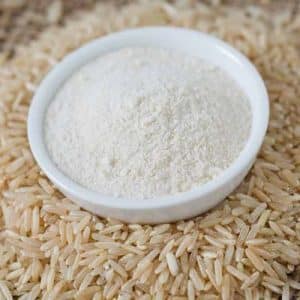Description
Japonica rice, also known as Oryza sativa subsp. japonica, is one of the two major subspecies of Asian rice, with the other being indica rice. It is commonly grown and consumed in East Asia, particularly in countries like Japan, South Korea, and parts of China. Japonica rice is known for its distinct characteristics and is often preferred for its unique qualities. Here’s a description of japonica rice:
Short and Round Grains: Japonica rice grains are short and round in shape. They are plump and tend to stick together when cooked, making them slightly sticky or glutinous. This stickiness is what gives japonica rice its characteristic chewy texture.
Mild Flavor: Japonica rice has a mild and slightly sweet flavor. Its taste is often described as clean and neutral, which makes it a versatile choice for various dishes. The mild taste of japonica rice allows it to complement a wide range of flavors and ingredients.
High Amylopectin Content: Amylopectin is one of the two main components of rice starch, the other being amylose. Japonica rice contains a higher proportion of amylopectin, which contributes to its stickiness and gives it its desirable texture for dishes like sushi and rice cakes.
Preferred for Sushi: Japonica rice is the preferred choice for making sushi rice because of its stickiness and ability to hold together when formed into sushi rolls or nigiri. Sushi chefs value japonica rice for its ability to absorb vinegar seasoning and maintain its shape.
Used in Traditional Dishes: In addition to sushi, japonica rice is used in various traditional and cultural dishes in East Asia. It is commonly used for dishes like Korean bibimbap, Japanese rice bowls (donburi), and Chinese rice cakes.
Cultivated in Cool Climates: Japonica rice is well-suited to cooler climates, and it is often grown at higher elevations in regions with temperate weather. The cooler growing conditions contribute to the development of its distinct characteristics.
Cultivars and Varieties: Within the japonica rice category, there are various cultivars and varieties that may have subtle differences in taste, texture, and appearance. Some popular japonica rice varieties include Koshihikari from Japan and Calrose from the United States.
Japonica rice is highly prized for its culinary applications, and its characteristics make it a staple in many Asian cuisines. Its unique stickiness, mild flavor, and versatility in different dishes have contributed to its popularity both in its native regions and internationally.















Reviews
There are no reviews yet.